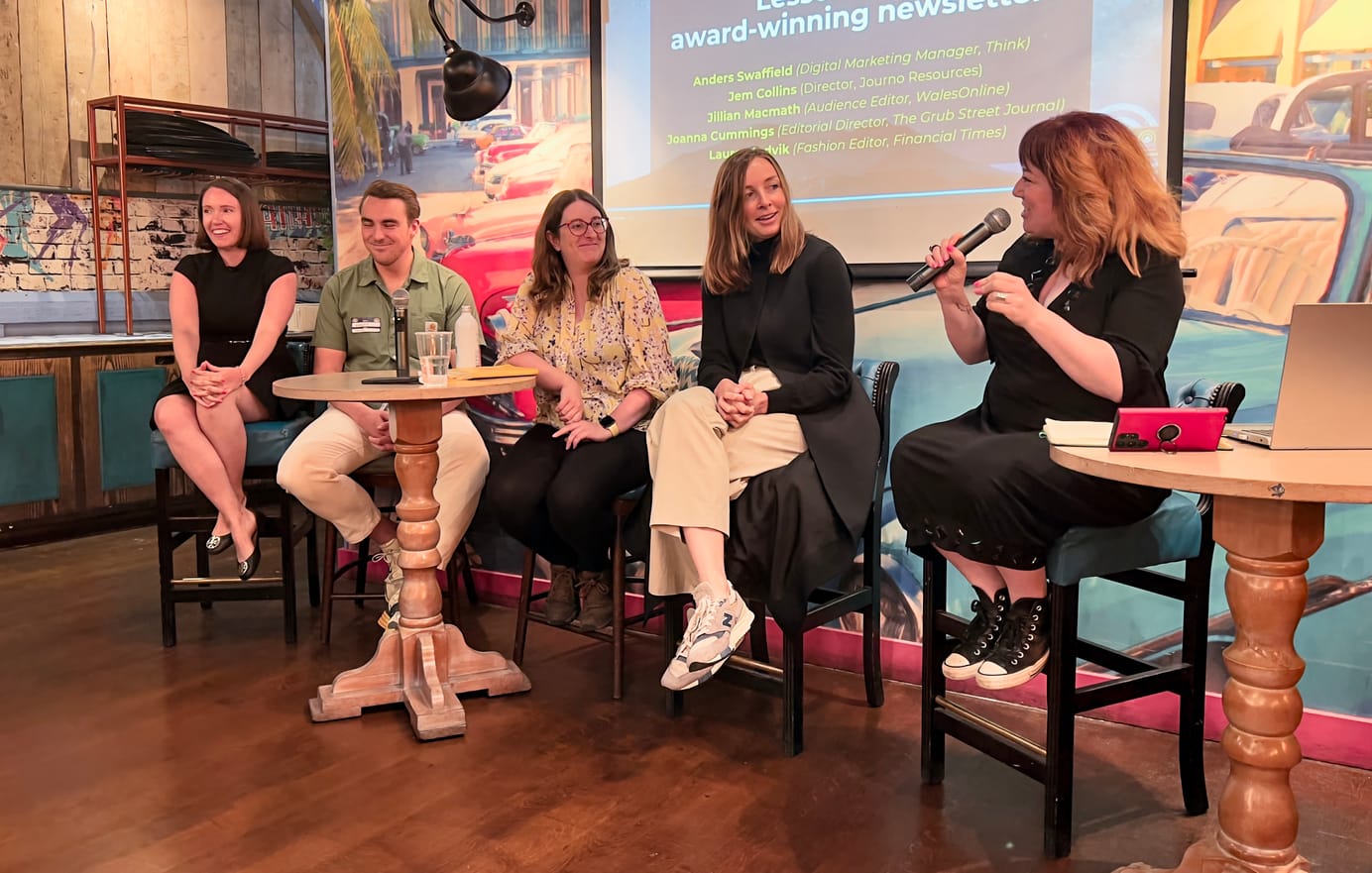#b2bhuddle : Katy Howell on concentrating content for lead generation
Katy Howell, CEO, Immediate Future
How do you concentrate your content? It’s pretty clear we need to think about social content with purpose. Social media is a business channel – but there are some big players in this. 80% of business buyers network online for work, 91% research for work – and 70% are promoting themselves. We don’t talk about brands, we talk through them…
Decision maker sand senior decisions makers are rarely lurkers – they’re an active group. 67.9% of B2B content marketing is targeted at lead generation. There are some challenges – the deluge of crap, it’s resource intensive and how do you know you’re capturing the quality of people you want?
If you’re a planner, you can’t help but put things in boxes. It helps you get your head around them. How can you make sure your content works hard for clients? Well, you target. Everyone talks about being personal. How many people present are creating content for an individual? Very few.
She’s so excited by Google planning tools. People don’t buy in a linear way, and B2B purchasing is not all digital yet (we need chips in people’s head (is that what Google Glass is?)) Thee tools don’t give you your journey – but they give you a benchmark. It helps you understand the journey.
IBM makes millions from “snaffling it” – just looking for requests on social media and having conversations on the fly. They don’t just sell – they send them things like a best practice guide for writing RFPs – content marketing. It jumps outside the funnel. On the other hand 66% of buyers use LinkedIn for identifying buyers, but 55% used Twitter for identifying the final supplier. (Again, your customers might be different).
Think about behaviours – but also think what they do before and after. Where do they go from LinkedIn? How do you follow up a capture form? Should you integrate this with your wide campaigns? Search support is important – it’s not all about search, but you can’t miss a trick. And – in lead generation – you have to work with the people around you: sales, social media, the board, your content resources – you have to know the structure. You have worked hard, and paid for great content. Make sure the flow fits, because you can’t measure unless you get to the end goal.
Bloody Strong Content Plans
Have a bloody strong content plan. It took us six weeks top plan customer magazines – it should be the same for social content. Think about publication date, search tersm, calls to action, trackable links, distribution and monitoring/KPIs.
BUT – content for lead generation has a different purpose. You need killer calls to action. There are calls to action on social media that you wouldn’t get away with on social media. You need to be disruptive to get noticed. How do you deal with conservative clients? Stealth and lying. You have to be a little on the edge – she doesn’t mind running around in her bra and knickers if it gets the job done. You can often find a change agent client-side. Euan Semple calls them trojan mice projects. Make sure the in-house person gets the glory. We live and breathe social media – our clients often don’t.
It’s hard to find content which has a clear purpose like lead generation right now. It’s about small tweaks – knowing behaviours, clearer calls to action.
There’s repercussions for poor content. We are seeing drops in the number of people downloading whitepapers, ebooks and webinars. 4.8% drop for whitepapers, 5.1% for ebooks and 21.6% for webinars. If a whitepaper is just an extended blog post, people get annoyed quickly. Spammy approaches to content have consequences – search engines won’t put up with it forever.
So, make things easy and clean, and use social proof. If it’s relevant, you’ll capture more of the people you want. Ensure bit.ly links have your brand in them in some way – makes them more trusted. Keep capture forms short. Use all relevant advertising tools: Facebook Exchange (jury still out), SlideShare capture (part of Pro), Twitter lead gen (14% rate), LinkedIn ads (not great) InMails (amazing).
People don’t sharpen their tools well. They don’t test and learn. Start with benchmarks. 46% of buyers find whitepapers useful for defining what they actually need. 44% find videos, webinars and podcasts for identifying suppliers. 51% use supplier e-mail for final selection. Document everything you do – short links, campaign codes and the like allow you to track effect.
You want to know performance by platform, but also by subsection of the platform. Not just LinkedIn, but groups, or news feeds, or company pages. Details. Track the actions, like Likes, clicks and comments. How is each content toe performing. What times of day work best? What topics work best? How about headline experiments – one of their clients saw a 40% uplink in traffics by putting what they would get through the link in brackets. Bundle all of this into a performance framework.
Test and dump. Rest things that aren’t working. Do A/B tests. Know what your hottest lead source is.
Feed all of this information into the purchase loop. Know what content contributes best at what point in the purchase cycle. It’s hard. Katy is not there yet. But she’s working on it.
Question & Answer
Are you doing analysis on costs per lead on social? Yes. Two clients have been doing cost per lead – it’s lower than DM, but higher than e-mail. And it wavers all over the place, because the content isn’t right yet. Month on month things change. The industry’s in churn, so it’s difficult to think about pay per lead.
Sign up for e-mail updates
Join the newsletter to receive the latest posts in your inbox.












